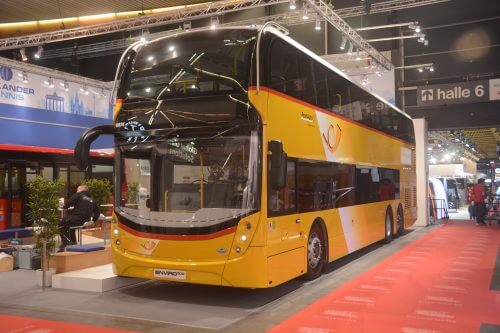
Gareth Evans and Andy Izatt report on Busworld Europe, the ever-expanding trade show in Belgium that attracts visitors and suppliers from across the world
Busworld Europe has been held in Kortrijk for the final time for the foreseeable future, the biennial trade show having outgrown its home. The popular event, which attracts industry professionals from across the world is moving to Brussels Expo in 2019, after being organised in Kortrijk Xpo for 24 editions or 45 years.
To give a sense of scale, organisers said this year’s show was attended by 311 vehicles – 231 inside the exhibition halls and 80 outside – and 376 exhibitors built their stands on 51,230 square metres in Kortrijk Xpo from 36 countries.The first Busworld exhibition was organised in 1971 and was called ‘Autocar- en Autobussalon’ at that time. Since then it has been held every two years in Kortrijk. The name ‘Busworld’ was used for the first time in 1999, marking the start of the international strategy of Busworld. Today, it is undoubtedly the oldest and most well-known exhibition in the bus and coach industry. In 2001, Busworld started to organise exhibitions in other continents. It now holds five such events – Busworld Europe (Kortrijk), Busworld Turkey, Busworld India, Busworld Russia and Busworld Latin America.[…]
By subscribing you will benefit from:
- Operator & Supplier Profiles
- Face-to-Face Interviews
- Lastest News
- Test Drives and Reviews
- Legal Updates
- Route Focus
- Industry Insider Opinions
- Passenger Perspective
- Vehicle Launches
- and much more!


